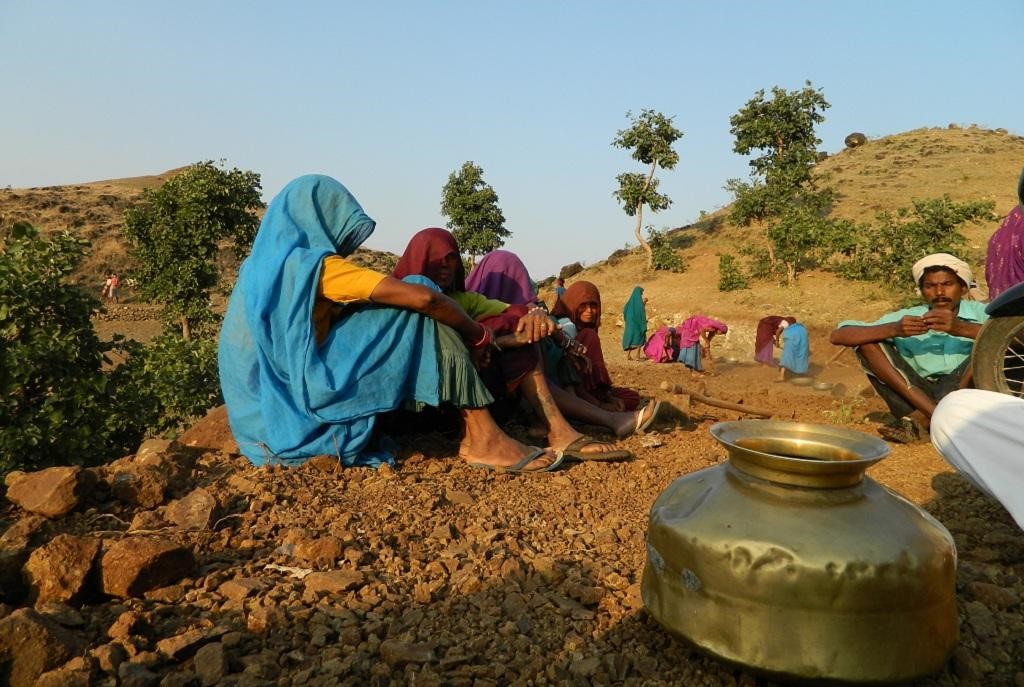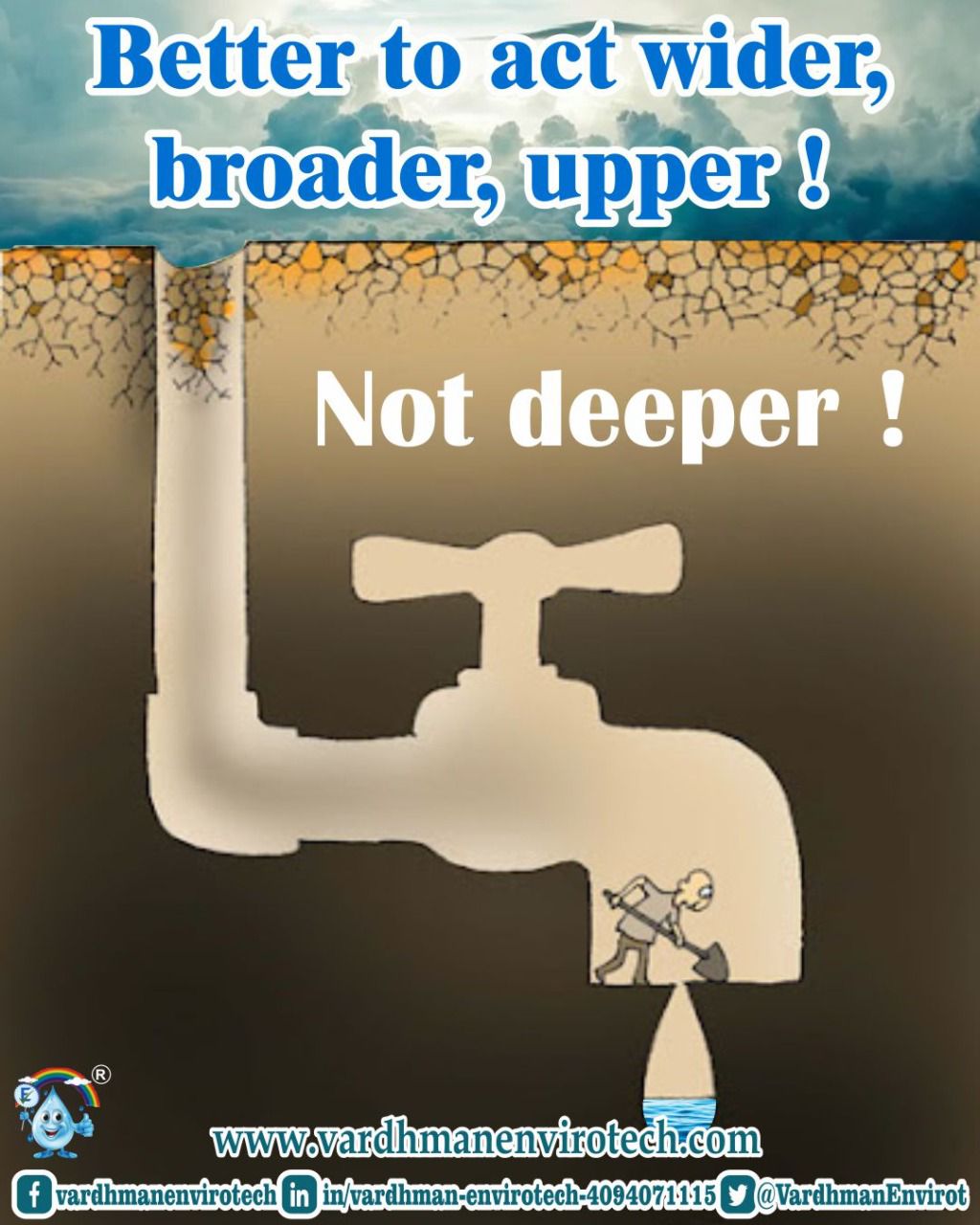Wherever it rained, the villagers collected the rainwater. One hectare of desert land in Barmer is collecting 10 lakh liters of water from only 100 mm of rain.

Photo Courtesy: Moyna
During the last 100 years, the world has seen two major changes in water management. First – Individuals and communities have pulled out of water management and handed over this responsibility to the government, while 150 years ago no government provided water.
Second, there has been a decline in the easy ways to use and collect rainwater, while groundwater through rivers and tube wells through dams have become the main source of water. The water of rivers and reservoirs is only a small part of the rainwater while the pressure on them is increasing.
Dependence on states means that the cost of water supply increases. This system will be affected due to the expenditure on repair and maintenance and poor arrangements for its recovery. No one is taking precautions in the use of water, due to which the sustainability of water resources has become doubtful, this problem has also been seen recently. This means that there are many problems with the government’s schemes related to the supply of drinking water.
Every year for the last 7 years, 1.4 lakh habitations were left out of the rural drinking water program. This information was given in the report presented in the Lok Sabha in 2016. Between 2007 and 2014, cores of rupees were spent to provide water to rural areas. Despite this new projects could not achieve the target of 58 percent. This is the reason why the government had to deploy hundreds of tankers to supply water to the villages during drought.
Community participation
But how can communities manage water for themselves instead of the government? For example, Barmer, one of the driest areas, receives 100 mm of rainfall in a year, which means about one million liters of water, which can meet the drinking and cooking needs of 182 people for a year. . A person can get 15 liters of water daily.
Even if you cannot collect all the rain or surface water completely, you can still collect about 0.5 ml of water in a year by adopting some rudimentary methods. People live in an area like Thar using such rudimentary technology and have made this area the most densely populated sandy area in the world. In such a situation, estimate that Eastern India receives an average of 2000 mm of rain every year and all this water can be collected. Only 500 square meters of land 21 meters long and 21 meters wide is needed to collect about 10 lakh liters of rainwater.
Most rural areas receive a good amount of rainfall annually. The area with less rainfall is Barmer, which also has less population. There is a lot of land available per person here. In contrast, the 24 Parganas in West Bengal receive abundant rainfall and are densely populated.

However, there is no such village in India which does not meet its basic requirement of water for drinking and consumption from annual rainfall. According to the data of Census 2011, there are about 83.3 crore people living in about 6 lakh 40 thousand villages. This means that there are about 1300 people living in almost every village and India receives an average annual rainfall of 1088 mm.
Although it varies, such as the sandy areas of western India receive 200 mm of rain, while the hills of northeast India receive 25,000 mm of rain. About 12 percent of the country receives an average of 610 mm of rain, while 8 percent receives 2500 mm of rain, but about 50 percent receive rainfall for 15 days and about 100 hours. While there are a total of 8760 hours in a year. The sandy areas of Gujarat and Rajasthan receive less than five days of rain a year, although some days are heavy, while the Northeast receives 150 days of rain.
If a person is given 8 liters of water a day, then on an average a village will need 38 lakh liters of water for food and drinking for almost a year. This means that on an average a village should collect rainwater in an area of 0.17 hectares, which is only about half of the total rainfall.If there is a drought-prone area and rainfall is low, the requirement of land may increase. There is a geographical difference between Rajasthan and Gujarat, so in Rajasthan 0.98 to 2.29 hectares of land will be required and in Gujarat, it will require 1.22 to 2.39 hectares.
In Delhi, where the villages are large and the rainfall is low, an area of about 8.46 hectares would be required, while in Arunachal Pradesh only 0.10 hectares would be required. And of course, if the rainfall is high and can be collected then that water can be used for irrigation as well.
Is it possible?
Is there any village where this much land is not available? The total area of India is 288 million hectares. Assuming that the inaccessible forests, high mountains, and other uninhabited areas are excluded, then about 144 million hectares of surface can be used. In this way, each village can provide an average of 224 hectares of land or about 244 crore liters of rainwater. These figures show that rainwater harvesting has a lot of potential and cannot be denied.
Recognizing the fact that rain fell almost every few days, the ancient Indians learned to harvest rainwater in various ways. In Rajasthan, people collected runoff from rooftops and stored it in tanks built in their courtyards. They collected the rain falling on the open community land in artificial wells in the form of cisterns. In North Bihar and West Bengal also people harvested water from the flooded rivers.
Therefore it is possible to make the country drought-free. It is also possible that everyone can get not only drinking water but also irrigation water to the fields, although such crops will have to be sown, which need water. For this, such a strategy has to be made that every village collects water flowing from its land, revenue land, and forest land in its tanks and ponds. Use its water, as well as it will increase the groundwater level.
Only then can the country have enough water in its tanks and wells to irrigate the fields in every single village.
This article is based on material prepared for Parliamentarians by late Anil Agarwal, environmentalist and founder editor of Down to Earth. You can download the complete paper from here.
http://www.rainwaterharvesting.org/
Vardhman Envirotech
India’s Passionate rainwater company
This article is published by: –
https://www.downtoearth.org.in/hindistory/water/water-crisis/water-crisis-deepening-in-India–65344
We would like to spread this for the benefit of fellow Indians.
Author: DTE Staff
Publish On: Friday 28 June 2019
